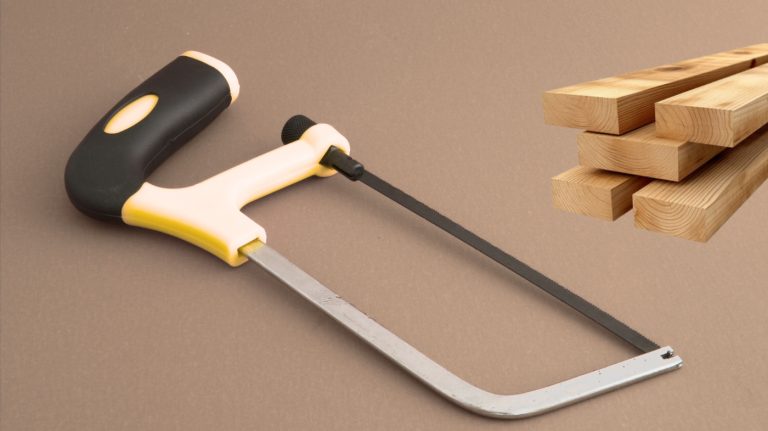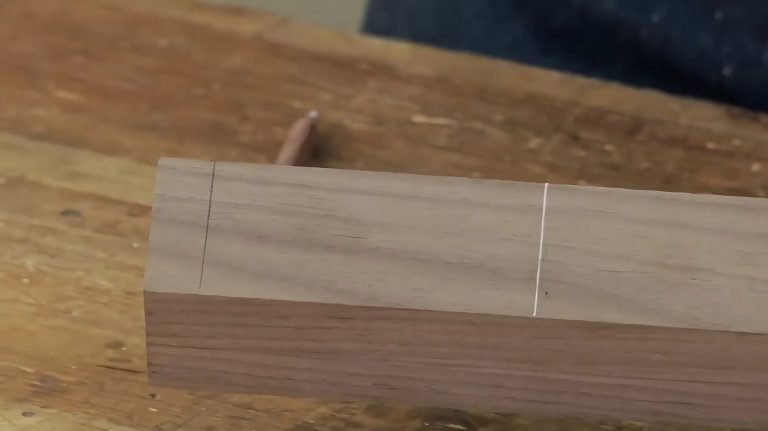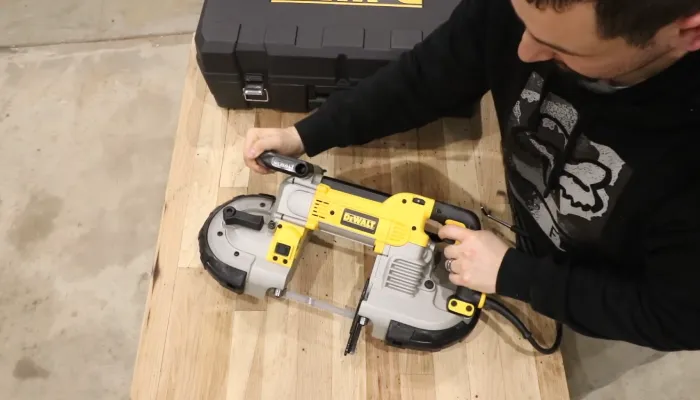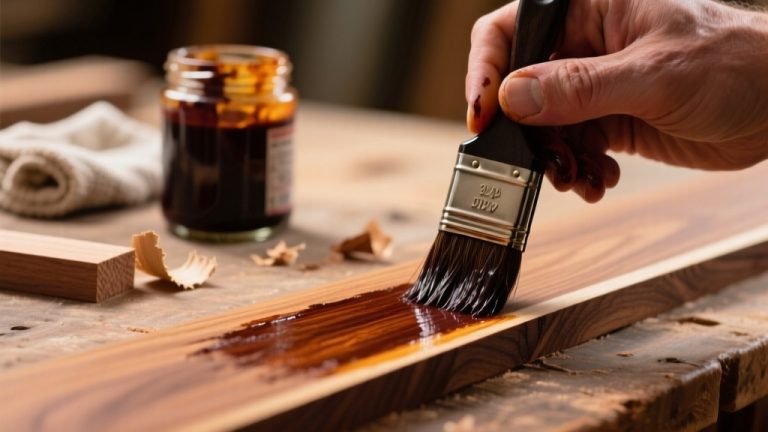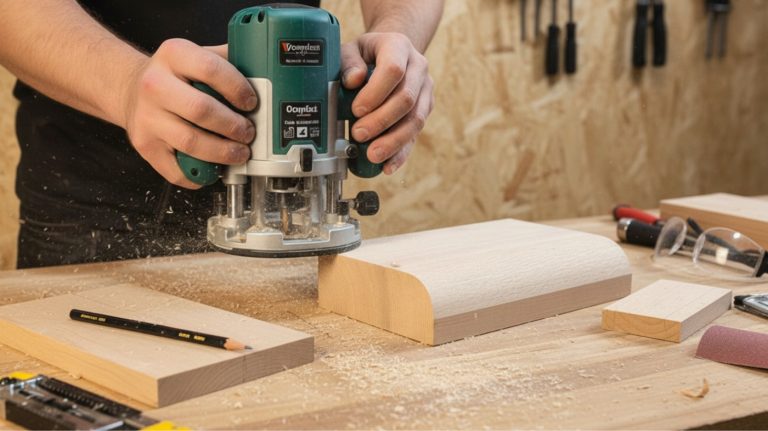Can a Roofing Nailer Be Used for Siding? Essential Facts
You shouldn’t use a roofing nailer for siding because roofing and siding nails differ in length, shank design, and corrosion resistance.
Roofing nailers are built for shorter, smooth-shank nails with larger heads, while siding requires longer, ring-shanked nails for better hold and weather resistance.
Using the wrong tool risks nail jams, improper fastening, and siding damage, which can compromise durability and warranties.
Understanding these distinctions will help you select the right equipment and ensure lasting siding performance.
Key Takeaways
- Roofing nailers are designed for shorter, smooth-shank nails and are incompatible with longer, ring-shank siding nails needed for siding.
- Using a roofing nailer for siding risks nail jams, misfires, and inadequate fastening, potentially damaging siding and voiding warranties.
- Siding requires longer nails with ring shanks for better hold and weather resistance, which roofing nailers cannot properly drive.
- Proper siding installation needs angled nail driving and adjustable depth control, features generally absent in roofing nailers.
- Using a siding nailer with correct nails ensures durability, reduces maintenance, and provides superior siding performance compared to roofing nailers.
Differences Between Roofing Nails and Siding Nails
Although roofing nails and siding nails may seem similar at a glance, their differences in length, head size, and shank design directly affect their performance and suitability for each application.
You’ll notice siding nails are generally longer, around 1 to 2 inches or more, to securely penetrate thicker siding materials. Roofing nails, typically shorter, have larger, thinner heads designed to hold shingles firmly. Additionally, the choice of nail material and design plays a crucial role in durability and grip.
In contrast, siding nails feature smaller heads and ring shanks for superior grip. Roofing nails have diamond-shaped points to minimize decking damage and are driven flush to the surface.
Siding nails are often left slightly raised or angled to allow siding expansion without loosening. These design distinctions ensure each nail type performs at its best under its specific environmental and structural demands. Ring-shanked nails in roofing enhance grip and holding power, making them ideal for heavy roofing materials.
Compatibility of Roofing Nailers With Siding Nails
Hey there! It’s important to know that roofing nailers are specifically designed for certain nail sizes and coil configurations. These usually don’t match up with siding nails. Using the wrong nails can also increase wear and tear on your nailer, leading to more frequent maintenance.
So, when you’re trying to feed siding nails into a roofing nailer, you might run into some issues like misfires or jams.
Using nails that aren’t compatible can really throw a wrench in your performance. Not only does it make the tool less effective, but it can also lead to damage and inconsistent fastening depth. Physical fit alone does not guarantee proper feeding or firing, so matching nail dimensions with the nailer specifications is crucial for reliable operation.
Nail Size Differences
When selecting nails for your roofing nailer, you need to ponder that roofing nails are generally shorter, ranging from 1 to 1-3/4 inches. Proper tool maintenance is essential to prevent operational issues when switching between nail types, as neglect can cause tool jamming.
Siding nails extend between 2 to 2-1/2 inches to penetrate thicker siding materials effectively. Roofing nails suit thin shingles, ensuring proper fastening without over-penetration, which preserves waterproofing.
Conversely, siding nails require greater length for secure anchoring through dense panels like vinyl or wood, enhancing holding power against environmental stresses. Additionally, siding nails typically have ring or screw shanks to provide better grip and prevent loosening over time.
This length discrepancy directly impacts compatibility, as roofing nailers are calibrated for shorter nails and lack the depth capacity for longer siding nails. Using improper nail sizes risks poor fastening, tool jamming, or damage.
Magazine and Collation
Nail length differences highlight the need to examine how roofing nailers handle siding nails beyond just size, specifically their magazine and collation compatibility.
Roofing nailers use coil magazines designed for roofing nails with specific shape, spacing, and collation angles, typically around 15 degrees with metal wire coils. These magazines are specifically created for coil nail guns, not individual nails, which ensures efficient fastening. The design of these magazines directly impacts the performance and durability of the nailer in jobsite conditions.
Siding nails often come in larger coils, different winding patterns, or plastic collation strips, causing feeding issues or jams in roofing nailers.
Additionally, roofing nail magazines are calibrated for larger roofing nail heads; siding nails with smaller heads or ring shanks may not feed or seat properly.
Without manufacturer-approved adapters or inserts, using siding nails risks malfunctions.
Always verify collation angle and magazine compatibility before attempting to use siding nails in a roofing nailer to ensure reliability and tool safety.
Risk of Misfires
Although roofing nailers are engineered for specific nail types, using siding nails in these tools often leads to misfires due to differences in nail head size, shank design, and length. Woodworking blogs often emphasize the importance of choosing the right tool for each task to avoid such issues and improve overall project quality.
You’ll encounter feeding and firing issues as roofing nailers rely on precise nail dimensions and coil geometry for reliable operation.
Improper nail length or thickness can cause jams or failure to penetrate framing. The incompatibility also affects the nailer’s reset mechanism, leading to frequent double shots or no fires.
Key risk factors include:
- Mismatched nail head size disrupting feed mechanism
- Coil connecting wire differences causing jams
- Incorrect nail length preventing proper penetration
- Nail shank variations leading to firing inconsistencies
- Hardened tool components resisting modification attempts
Additionally, many coil nails are nearly too large for certain guns, and the lower connecting wire in the coil is not well accommodated, worsening these issues. Proper tool maintenance and safety practices can help identify and prevent damage caused by using incompatible nails.
Using siding nails in roofing nailers risks tool damage, productivity loss, and unsafe fastening.
Functional Purposes of Roofing Versus Siding Nails
Because roofing and siding nails serve distinct roles, understanding their functional differences is essential for proper application.
Roofing nails feature larger heads and smooth, shorter shanks designed to secure asphalt shingles tightly. This ensures a water-resistant barrier and resists shear forces from wind. Proper cleaning and maintenance of nails before use can improve their effectiveness and longevity.
Roofing nails have larger heads and short, smooth shanks to firmly hold shingles against wind and water.
In contrast, siding nails have smaller heads and longer, slender ring-shanked shafts to penetrate thick siding. They accommodate thermal expansion and contraction, providing superior withdrawal resistance.
Siding nails hold siding panels securely while allowing slight movement to prevent warping or cracking. This flexibility is crucial because siding must be able to move ¼ inch to accommodate temperature changes.
Material-wise, roofing nails often use galvanized steel or copper for corrosion resistance against constant moisture.
Siding nails endure freeze-thaw cycles and UV exposure, necessitating specialized coatings.
Using roofing nails on siding compromises long-term durability due to inadequate grip and flexibility. This highlights the importance of selecting nails engineered for specific functional demands.
Installation Techniques for Roofing and Siding Nails
Understanding the distinct functions of roofing and siding nails sets the stage for mastering their installation techniques.
When installing, you must account for nail type, angle, and material behavior to guarantee durability and performance.
Drive roofing nails flush to secure shingles watertight without compromising integrity. Hand-nailing allows for precise control over nail placement, which is especially beneficial in detailed or critical roofing areas. Regular maintenance and inspection reduce risks of damage and ensure optimal nail performance.
Insert siding nails at a slight angle, leaving heads slightly proud to allow natural expansion.
Use siding nails with ring shanks for superior grip in thick panels; roofing nails usually have smooth or ring shanks.
Adjust depth controls on siding nailers to prevent overdriving and material damage.
Employ hand-nailing in complex siding areas for precision and to avoid restricting movement.
Impact of Using the Wrong Nailer on Project Quality
When you use the wrong nailer on siding projects, you risk compromising both the structural integrity and longevity of the installation.
Roofing nailers, designed for shorter nails with large, smooth heads, fail to secure siding properly. Siding demands longer nails with ringed shanks for superior grip and resistance to withdrawal. This mismatch leads to insufficient penetration and uneven nail placement, causing loose panels susceptible to wind damage and moisture intrusion.
Additionally, roofing nailers typically have limited firing mode adjustment, which can reduce precision in fastening different siding materials. Retrofitting tools for inappropriate applications often results in compatibility issues that affect performance and safety.
Improper fastening also risks splitting siding materials and voiding manufacturer warranties. Furthermore, using roofing nailers reduces your control over nail depth and consistency, increasing rework and delaying project completion.
To maintain high-quality siding installations, you must match your nailer to the specific siding nails. This ensures excellent holding power, accurate placement, and durable performance under environmental stresses.
Cost Considerations for Roofing and Siding Nails
Siding nails tend to be a bit pricier, and that’s mainly because they’re longer and have that specialized ring-shank design. This means they require more material and a more complex manufacturing process. Moreover, the enhanced power needed for siding nails ensures they hold up better under outdoor conditions.
On the flip side, roofing nails are generally cheaper, but here’s the catch: they don’t have the holding power needed for siding applications. This could lead to future repairs, which can be more costly in the long run. Additionally, siding nailers are designed to handle thicker, longer nails, ensuring the siding stays securely fastened over time.
Nail Material Costs
Nail material costs play a crucial role in your budgeting for roofing and siding projects, reflecting differences in size, composition, and manufacturing complexity.
Siding nails generally command higher prices due to their longer length, ring shank design, and durable materials like 304 stainless steel. Roofing nails use less metal and simpler coatings, making them more affordable but less corrosion-resistant. Additionally, selecting the appropriate nail type, such as galvanized or stainless steel options, impacts both cost and corrosion resistance.
Consider these factors when estimating costs:
- Longer siding nails increase material usage and shipping weight.
- Ring shank manufacturing adds to production expenses.
- Higher-grade metals and specialized finishes raise siding nail prices.
- Roofing nails’ smooth shafts and larger heads reduce tooling cost.
- Bulk packaging and coil availability lower roofing nail per-unit cost.
Understanding these cost drivers helps you allocate funds effectively without compromising project longevity or performance. Regular maintenance and attention to tool condition, such as using a circular saw blade sharpener, can also improve overall project efficiency and reduce costs.
Length and Design Impact
Material costs reflect not only the type of nails used but also their length and design, which directly influence performance and installation quality.
Roofing nails are shorter (1 to 1-3/4 inches) with larger heads and smooth shanks, suitable for thin shingles requiring less penetration.
In contrast, siding nails are longer (up to 2-1/2 inches), often ring-shanked with smaller heads, designed to securely fasten thicker materials like vinyl or Hardie panels while accommodating expansion and contraction. Selecting nails with the correct length and head design helps prevent siding damage and ensures long-term durability.
Although siding nails cost more upfront due to length and specialized design, they provide superior holding strength and reduce maintenance.
Using shorter roofing nails on siding risks insufficient grip, leading to damage and costly repairs.
Therefore, selecting nails with appropriate length and design is critical to ensuring installation durability and cost efficiency over time.
Long-Term Investment Value
Although siding nails come with a higher upfront cost compared to roofing nails, their enhanced design and durability make them a smarter investment for long-term siding projects.
You’ll find siding nails typically cost between $144 and $170 per box, reflecting their ring shank design and galvanized materials which resist weathering and reduce pull-out.
Roofing nails, priced around $66 to $106, use smooth shanks and shorter lengths, offering less holding power and durability for siding.
By choosing siding nails, you benefit from stronger holding power due to ring shanks.
Siding nails should be installed at an angle, leaving a small gap for expansion and contraction, ensuring proper siding movement and avoiding damage.
You also gain enhanced resistance to loosening and weather, reduced maintenance and repair frequency, and an extended siding lifespan.
This results in lower long-term structural risks and costs.
Invest in the right nails to ensure lasting siding performance and cost efficiency.
Expert Recommendations on Nailers for Siding Projects
When tackling siding projects, you’ll want to select a siding nailer specifically engineered to handle the unique requirements of siding materials.
Experts recommend siding nailers because they accommodate longer nails with ringed shanks, essential for securing thicker siding and resisting pull-out forces.
Unlike roofing nailers, siding nailers drive nails at a slight angle, supporting siding expansion and contraction without compromising integrity. Both tools serve distinct construction purposes, so using the right tool ensures optimal results.
Additionally, siding nailers offer adjustable pneumatic settings and ergonomic designs for precise control and user comfort during extended use.
Using a roofing nailer risks poor fastening, structural issues, and reduced siding longevity due to the smooth-shank, shorter roofing nails and their flush installation.
For durable, secure siding installation, trust siding nailers tailored for the task rather than adapting roofing tools ill-suited for siding demands.
Frequently Asked Questions
Can Using a Roofing Nailer Void Siding Warranty Coverage?
Yes, using a roofing nailer can void your siding warranty.
Manufacturers require specific siding nails with ring shanks, proper length, and corrosion resistance to guarantee secure fastening and product longevity.
Roofing nails lack these features, leading to improper fastening and potential siding damage.
Ignoring installation guidelines breaches warranty terms, so you risk losing coverage.
Always use the correct siding nailer and nails to maintain warranty compliance and prevent structural issues.
How Do Weather Conditions Affect Roofing Versus Siding Nail Performance?
Imagine you nail siding during a coastal storm; salt spray corrodes standard nails faster than roofing nails, which have thicker, galvanized heads.
Weather affects roofing nails by demanding strong hold against uplift and lateral wind forces.
Siding nails must accommodate expansion and contraction without backing out.
You’ll need corrosion-resistant fasteners for both, but siding nails require precise depth control to allow material movement.
This is especially important in freeze-thaw cycles to maintain integrity.
Are There Safety Risks When Using a Roofing Nailer on Siding?
Yes, you face significant safety risks when using a roofing nailer on siding. The mismatched nail types increase tool jams and misfires, raising injury chances like punctures or recoil impacts.
Roofing nailers with contact triggers can cause unintended discharges, especially in awkward positions. Without proper training and the right sequential trigger nailer, you risk accidental firing and compromised control.
This jeopardizes both your safety and the siding’s structural integrity.
What Maintenance Is Required for Roofing and Siding Nailers?
You need to clean your nailer daily by removing debris and dust from the magazine and nail rail, using compressed air for internal parts.
Lubricate the tool with pneumatic oil before and after use, avoiding WD-40 or grease.
Regularly inspect and replace worn O-rings, springs, and seals to maintain air pressure.
Tighten screws, test safety mechanisms, and store the tool unloaded in a dry, cool place to guarantee reliable performance.
Can Nail Gun Noise Levels Differ Between Roofing and Siding Nailers?
Yes, nail gun noise levels can differ between roofing and siding nailers, though the gap is subtle.
Roofing nailers often hit 90–95 dB, sometimes peaking at 98 dB with coil models.
While siding nailers usually range from 88–94 dB.
You’ll notice pneumatic tools are louder due to compressor noise, whereas cordless versions operate more quietly.
Despite these nuances, both demand hearing protection during prolonged use to safeguard your hearing.
Choose the Right Siding Nailer for Lasting Results
While it might seem tempting to use a roofing nailer for siding, you shouldn’t. Roofing and siding nails differ in size, shape, and function, impacting your project’s durability and finish.
Using the wrong nailer is like bringing a horse and buggy to a drag race. It is inefficient and potentially damaging. For best results, choose a siding nailer designed for the task. This ensures precise installation, maintains structural integrity, and ultimately saves time and money.


